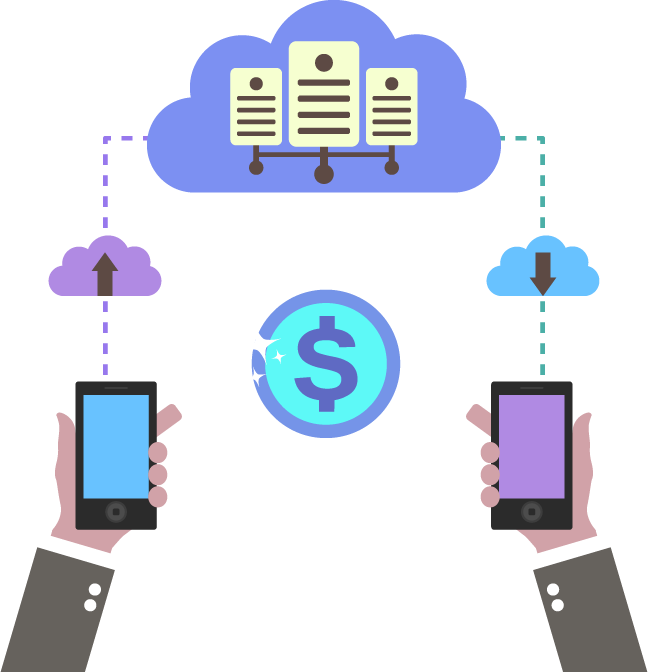Table of Content
Share This Article
- Reading Time: 8 Minutes
- Published: February 18, 2023
- Last Updated: January 18, 2025
Are you a SaaS business looking for the most effective way to record your revenue? Have you come across the term “revenue recognition” but don’t know what it means or how it works? Look no further – this guide is the solution for all your SaaS revenue recognition queries! For any SaaS business, accurately recognizing and reporting revenue is essential for compliance with accounting standards. However, it can also be a complicated process if you don’t have the right knowledge. In such situations, outsourced accounting services can prove to be a blessing. But even if you hire an outsourced service provider, it is best to have a basic understanding of revenue recognition for your SaaS business. In this blog, we will provide a comprehensive guide to revenue recognition for SaaS businesses so you can make sure you are doing it correctly.
Revenue Recognition for SaaS Businesses
Revenue recognition for SaaS businesses refers to the process of recognizing revenue from the sale of software products or services. It can be done on a subscription basis, where customers pay for access to the software on a monthly or annual basis, or on a per-user basis, where customers pay for each use of the software.
In order to recognize revenue, businesses must first identify the contract with the customer, which should include all relevant terms and conditions. Once the contract is in place, businesses can then recognize revenue based on the performance obligations included in the contract. For example, if a business has sold a software product on a subscription basis, it will recognize revenue each month as the customer pays for access to the product.
When it comes to accounting for SaaS, the revenue recognition process is complicated, and it is crucial to choose the right method of recognizing revenue as it directly impacts the other accounting functions. Businesses need to hire experts to help them accurately understand and calculate their revenue. However, to save costs on hiring new full-time personnel and reduce stress from the shoulders of existing resources, businesses can opt to rely on virtual accounting services.
Common Challenges with Revenue Recognition for SaaS Businesses
There are a few common challenges that SaaS businesses face when it comes to revenue recognition. Let us take a closer look at each of these challenges:
- Determining when to recognize revenue: One of the biggest challenges with revenue recognition for SaaS businesses is determining when to recognize revenue. It can be tricky because long-term contracts are often involved, and it is not always clear when the service has been delivered.To complicate matters further, different types of services may be provided under the same contract (e.g., one-time setup fees, recurring monthly fees, etc.). It can make it difficult to determine exactly when each service has been delivered and how much revenue should be recognized for each service.
- Allocating the revenue between products and services: Another common challenge with revenue recognition for SaaS businesses is allocating the total contract value between the various products and services provided. It can be tricky because some products and services may be delivered upfront while others are delivered over time.For example, let us say a SaaS business has a contract with a customer that includes a one-time setup fee as well as a recurring monthly fee. The challenge then becomes how to allocate the total contract value between the one-time setup fee and the recurring monthly fee.
- Understanding complex subscription models: SaaS businesses often have complex subscription models that can make revenue recognition even more challenging. For example, a customer may be able to purchase multiple products as part of a subscription package, or they may be able to upgrade their subscription over time as their needs change. It can make it difficult to accurately determine when revenue should be recognized for each product or service in the subscription package.
Deferred and Accrued Revenue Recognition: Meaning and Differences
One of the biggest challenges businesses face is understanding and differentiating between the two most important revenue recognition concepts for SaaS businesses. These two concepts are deferred revenue and accrued revenue. Whether your books are managed by a professional outsourced accounting services provider or an in-house accountant, it is important to understand these concepts to choose the right one. Let us understand them in detail.
Deferred revenue recognition is a common accounting practice used by businesses to delay recording revenue until it is earned. It allows businesses to match expenses with the related revenue and provides a more accurate picture of the company’s financial performance. Accrued revenue recognition, however, records revenue as soon as it is invoiced, regardless of when it is earned.
The main difference between deferred and accrued revenue recognition for SaaS businesses is that deferred revenue recognizes recurring payments over time, while accrued revenue recognizes one-time payments immediately. Deferred revenue is typically used for subscription-based services, where customers make regular payments to access the service. Accrued revenue is more commonly used for one-time products or services, where the customer pays for the product or service in full upfront.
There are pros and cons to both methods of accounting for SaaS revenues. Deferred revenue provides a more accurate picture of a company’s recurring revenues and expenses, which can help forecast future cash flows. However, deferred revenue can also create negative cash flow in the short term if expenses exceed revenues. Accrued revenue can boost short-term cash flow but can also lead to mismatches between expenses and revenues if not managed carefully.
Companies should consider their overall financial goals and objectives when choosing between deferred and accrued revenue recognition for their SaaS business. If cash flow is a priority, then accrued revenue may be the better option. If long-term stability and accurate financial statements are more important, deferred revenue recognition may be the better choice. Ultimately, it is up to each company to decide which method of revenue recognition best suits their particular needs.
About ASC606 For Revenue Recognition
ASC606 is the new revenue recognition standard for SaaS businesses. It went into effect on December 15, 2017, and superseded ASC605. The main difference between the two standards is that ASC606 requires companies to recognize revenue based on the customer’s service consumption rather than when the service is delivered. This change significantly impacts SaaS businesses, as it requires a different approach to accounting for revenue.
Under ASC606, companies must recognize revenue based on three different criteria:
- when the service is delivered;
- when the customer consumes the service; and
- when the customer pays for the service.
The most important criterion for SaaS businesses is the second one – when the customer consumes the service. It means that companies must track how customers are using their product or service to recognize revenue properly.
The new standard also requires companies to disclose more information about customer contracts. In particular, companies must disclose the following:
- the nature of their performance obligations;
- whether those performance obligations are satisfied over time or at a point in time; and
- whether they use the proportional performance method or another method to allocate revenue between periods.
The changes brought about by ASC606 will have a major impact on SaaS businesses. Companies need to track customer usage more closely and disclose more information about their contracts.
Best Practices for Accruing Revenue as per US GAAP Compliance
Whether you have expert in-house accountants or lean on your outsourced accounting services provider, one of the most important aspects of US GAAP compliance to keep in mind is accruing revenue. Revenue must be accrued to comply with US GAAP standards. There are a few different ways to accomplish this, but the best practices for accruing revenue in US GAAP compliance are as follows:
- Make sure that all revenue is properly recorded and categorized. It includes identifying the type of revenue, such as product sales, service fees, or other forms of income.
- Be sure to include all relevant information when recording revenue. It includes the date of the transaction, the customer or client involved and any other details that could impact the amount of revenue being accrued.
- Use a consistent method for accruing revenue. It will ensure that all revenue is accounted for in the same manner, making it easier to track and report on over time.
- Review your records regularly to ensure accuracy and compliance with US GAAP standards. It will help catch any errors or discrepancies so they can be corrected before they impact your financial statements or tax filings.
By following these best practices, you can ensure that your accounting system is US GAAP compliant and that all revenue is properly accrued. You can also hire the services of virtual accounting services providers to help you ensure compliance with every accounting compliance as per US GAAP and ASC606.
Examples of Revenue Recognition for SaaS Companies
The nature of the subscription service means that customers pay for access to the software over time rather than paying for a one-time purchase. It creates a unique challenge when it comes to revenue recognition.
Two main ways to recognize revenue for SaaS businesses are subscription and usage-based accounting.
With subscription accounting, companies recognize revenue on a monthly or annual basis. It means that if a customer pays for a year-long subscription up front, the company would recognize that revenue over 12 months rather than all at once.
Usage-based accounting is more complex and recognizes revenue based on how much the customer actually uses the software. It could be measured in terms of time, the number of features used, or some other metric.
The key thing to remember with both methods is that revenue should only be recognized when the service is actually provided to the customer. It means that if a customer cancels their subscription or doesn’t use the software, there should be no recognition of revenue.
Conclusion
Revenue recognition for SaaS businesses can be complex, but this comprehensive guide should have given you the tools and resources needed to understand it. With the right accounting principles in place and an understanding of how different types of revenue are treated, you can ensure that your business accurately recognizes its income. It is important to remember that accruing revenue is just one of many tasks related to accounting for SaaS that must be completed regularly. So, it pays to get familiar with all the applicable regulations and procedures if you are going to stay compliant with US GAAP standards. By having a clear strategy for revenue recognition, you will be able to manage cash flow better, plan your expenses more effectively, and maximize profitability.

Get customized plan that supports your growth

Thousands of business owners trust Whiz to manage their account
Let us take care of your books and make this financial year a good one.








